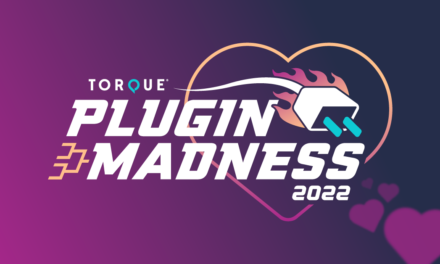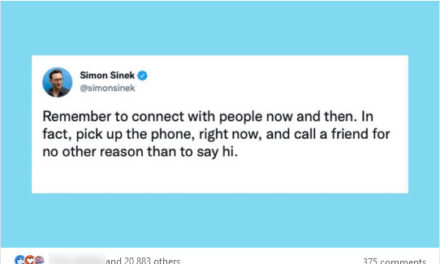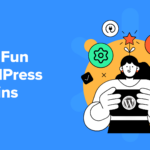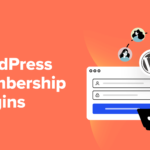Email is an important tool for WordPress and WooCommerce membership sites, but many of those sites aren’t taking advantage of all it can offer.
One of the most common reasons we’ve noticed is simple: Membership site owners simply aren’t aware of all the powerful, valuable, memberships-focused emails they could be sending. After all, the overwhelming majority of email service providers aren’t set up to handle automated emails related to memberships—so, too many memberships sites, the prospect of figuring out workarounds to send those emails feels prohibitively complex.
However, it doesn’t have to be. In this article, we’re going to cover four important types of automated emails memberships sites should send and give some advice on how to set them up.
The four types of automated emails membership sites should send
1. Welcome emails
Welcome emails are a key first step in a member’s journey. You can use a welcome email (or welcome series) to introduce your site and your team, reiterate the perks of membership, educate members, entertain, or even upsell to a higher tier of membership.
Welcome emails are crucial because you want to make sure a new member gets in the rhythm of engaging with your site early on in their journey. New customers are most engaged within the first 48 hours, and people who read your welcome emails go on to read 40 percent more of your emails over the next six months. When you send welcome emails, you capitalize on a new member’s peak excitement—and kickstart their habit of regularly reading your emails and utilizing their membership.
Here are a few tips for effective membership welcome emails.
- Use a series. While one welcome email is good, a series is even better—it further builds the habit of reading your emails, and it helps you really nurture the new relationship with a member. One possible series could be: (1) thank you email (2) basics about the membership (3) intro to the company (4) education about how to use your products (5) check-in to see how membership is going so far (6) upsell to a higher tier of membership.
- Set expectations. Tell your members how often they’ll hear from you, how to use community or membership resources, and what happens next in their membership. Show them how to get value from the membership and when to expect your emails.
- Use case studies and user-generated content. One great way to demonstrate the value of a membership is showing how other satisfied members are utilizing it. Share case studies and user-submitted stories and images to give your new members ideas of how they can maximize their membership.
Here’s an example of a welcome email from Spotify that goes out to new premium-level members. It reiterates the perks of the premium tier, which validates that the member made a smart decision to sign up. The call-to-action is “Start listening”—they want the customer to immediately start taking advantage of their membership to see its value right away.

Via: Chamaileon.
2. Win-back emails
Win-back emails are automated emails that go out to lapsed members in an effort to get them to renew. While win-back emails tend to have a relatively low open rate (roughly 12 percent, according to one study), our internal data at Jilt shows win-backs for memberships sites perform much better than traditional eCommerce stores—up near a 50 percent open rate on average, with a 35 percent click-to-open rate (showing that more than 1 in 3 readers engage with email content!).
What does that mean? Your members are more receptive to hearing your “last chance” pitch than the average eCommerce customer—especially if you frame the pitch correctly.
Here are a few tips for winning back your lapsed members.
- Don’t blame the member. Win-back emails shouldn’t be accusatory or aggressive—use a light tone to avoid your lapsed member having a knee-jerk adversarial reaction. Approach this email from a place of helpfulness to show the member how to renew, and why they should.
- Reiterate your value. A good win-back email reminds a member about the fantastic perks they get by being a member. After all, back when they initially signed up, they had a good reason—you need to remind them of that reason. Win-backs are also a good chance to show off some new perks you’ve added recently they may not be aware of.
- Keep it short. A win-back email should be short, to-the-point, and easily actionable with one prominent call-to-action to renew.
Here’s an example from Skillshare: they remind the member of some of their more popular course offerings, reiterate the perks of membership, present a one-time discount, and put an expiration on the offer to create a sense of urgency.

Via: Emma.
3. Abandoned cart recovery emails
Abandoned cart recovery emails go out to customers who put a product in their cart but don’t complete checkout. When it comes to membership sites, there are two different types of cart abandonment: People who add a membership to their cart but don’t finish checking out, and members who add some other product to their cart but don’t finish checking out.
In either case, cart recovery emails are extremely lucrative. While the average recovery rate is 12 percent, our data at Jilt shows that recovery rates rise toward 15 and even 20 percent with a strategic recovery series. Recovery emails are also incredibly lucrative—our numbers also show that for every cart abandonment email you send, you’ll see an average of $4.80 in revenue.
Here are a few tips for setting up cart recovery emails with a memberships site.
- Reiterate the membership perks. If someone puts a membership in their cart but doesn’t check out, make sure your recovery emails lay out all of the great perks they’re missing out on by not becoming a member. And if you offer special pricing to members, when one puts a product in their cart on your WooCommerce site but doesn’t check out, remind them of that special pricing. (For example, if your members get 10 percent off and free shipping on all their orders from your store, make sure to remind them in the recovery email.)
- Send a three-email series. We recommend a three-email cart abandonment series. The first email goes out within an hour of the cart being abandoned; the second email goes out a day later; and the third and final email goes out a day after that.
- Address potential hold-ups. You want your cart abandonment recovery emails to clear up any potential issues that might’ve stopped the customer from making the purchase. Provide customer service contact information, a FAQ, and any other information that might clear up their issue.
Here’s an example of a membership recovery email from Ultimate Courses. They use a testimonial to really push the value of a membership—and the statement has extra credibility because it’s linked to a real person.

Via: MailerLite.
4. Pre-expiration notifications
Pre-expiration notifications go out to your members in advance of their membership’s end date (as opposed to win-back emails, which go out after that date).
These emails are an important tool for member retention. And if you frame them correctly, pre-expiration notices can feel like a service to your customers—after all, now they don’t have to worry about figuring out when their membership ends or where to go to renew. You’ve taken care of that mental load for them! That’s one of the big reasons why pre-expiration notifications perform so well—Jilt’s numbers show a 43 percent open rate, 14 percent click-through rate, and 32 percent click-to-open rate.
Here are a couple of tips for setting up pre-expiration notifications.
- Give advance notice, but not too much. If you start sending pre-expiration notifications too early, there’s no sense of urgency to renew. (Unless, of course, you provide some kind of discount or incentive for early renewal.) Consider sending the first pre-expiration notice about two weeks before an annual membership is set to expire.
- Reiterate the perks. Your pre-expiration emails should really emphasize the perks of keeping up a membership—and make it clear what the member will be losing out on if they let their subscription lapse.
Here’s an example of a pre-expiration notice from Experian. They position the renewal notification as a service—renew now so you don’t have to worry about remembering to do so during the holidays. The email also reiterates all the benefits members would lose if they let their membership lapse.

Via: Pure360.
How to set up these emails for your memberships site
As we said earlier in this article, depending on your email marketing platform and the types of emails you want to send, it can sometimes be tricky to set up some automated membership emails. Here’s our advice for getting started with the two primary email options.
Option 1: Email through your memberships extension
Some of the memberships extensions for WordPress have a few automated emails baked right in.

The upside to sending directly through the extension is your automated emails have full access to all of your up-to-the-minute member data—that’s something you won’t get with many third-party solutions, as you’ll see below.
The downside, however, is that there are often stark limitations on these emails. They’re sent through WordPress, which simply isn’t equipped for bulk emailing and will likely result in poor deliverability. And because these emails are part of an extension, they generally have far fewer features than standalone email service providers can offer—you may not be able to further segment emails (such as differentiating between higher and lower value members), set up an email series, or properly customize your emails. They also may not offer all of the automations we’ve discussed in this article.
With that said, built-in emails are a great quick way to start sending these emails at no cost! You can always start there and upgrade your emails later.
Option 2: Email through a third-party email marketing platform
To get even more out of your membership emails, you’ll need to find a third-party email marketing platform that integrates with your membership plugin. (For instance, Memberful, Memberpress, Restrict Content Pro, and WooCommerce Memberships all have integrations with email platforms like Mailchimp or Drip to allow for some data syncing and a handful of more advanced emails.)
Taking it a step even further, you can look for an email marketing platform that is specifically built to handle memberships emails. For example, WooCommerce Memberships and email platform Jilt are both developed by SkyVerge, which allows for a complete data sync, built-in memberships templates and email flows (like all of the emails discussed in this article), and unified support.
With a native integration like the one between Jilt and WooCommerce Memberships, your membership data is automatically synced back and forth with your email marketing platform, which allows you to send automated and segmented emails without any extra tagging or workarounds.

Conclusion
Email marketing can substantially benefit almost any WordPress or WooCommerce membership site, but many aren’t taking advantage of what it has to offer. The main reasons? They aren’t aware of all the valuable emails they could be sending, and if they do know about them, those emails can feel like they’re too complex to set up.
However, sites can see tremendous value from sending automated emails like a welcome series, win-backs, cart abandonment recovery emails, and pre-expiration notifications.
The process of setting up these emails depends on your email marketing platform. You may be able to set up some of these directly in your memberships plugin. But to send more robust emails with things like data syncing and membership email templates, look for a native integration to an email marketing platform.











